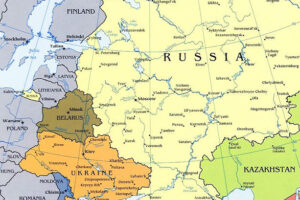Business New Europe: Ukraine’s refugee flood to Russia accelerates demographic hemorrhage

(Business New Europe – bne.eu – October 7, 2014) Hundreds of thousands of refugees who have fled from the conflict in Ukraine’s Donbass region to Russia may never return. Despairing of peace in Donbass, and with unemployment in Russia at a historic low, the population movement may exacerbate Ukraine’s already disastrous demographics.
According to United Nations figures, more than 1m Ukrainians have fled the fighting in the Donbass region of East Ukraine, where a ceasefire is currently barely holding. Russian officials say that around 875,000 fled to Russia, with around 300,000 of these now applying for temporary residence. Many of those fleeing are families with children, with the elderly more inclined to stay put.
“This is a group of people who we should accommodate and provide for,” Russian Prime Minister Dmitry Medvedev said on October 1, as quoted by newswires. “They are staying here to work and live, and they should get jobs and their children should go to school.”
Russia may well be glad of the influx of spare hands. The Russian economy may be slowing, but unemployment has hit an historic low, reported at 4.8% in September – with labour shortages one of the factors slowing growth.
Russia’s economy has already sucked in millions of immigrants from the other former Soviet countries over the last 15 years. While this provides vital economic support to Central Asian countries such as Tadzhikistan that have growing populations, for Ukraine the loss of population to Russia may exacerbate one of the world’s worst demographic crises.
Ukraine’s population has dropped by 6.3m people, or 12%, since independence in 1990 and is predicted to decline to below 34m by 2050, as birth rates have dived, but mortality rates have remained stubbornly high. Ukraine’s demographic crisis is even worse than Russia’s as Russia’s population has been growing, albeit slowly, for the last five years, while that of Ukraine continues to fall.
Emigration exacerbates this disastrous demographic structure. International Labour Organisation statistics say that 1.2m Ukrainians were abroad looking for work in 2010-2012, 43% of whom headed for Russia. This makes the Ukraine-to-Russia corridor the second-largest migration route in the world, following the Mexico-USA corridor, according to a research paper by Judy Twigg, professor at the VCUL Douglas Wilder School of Government and Public Affairs.
Thus while Russia has managed to partly compensate for its demographics by taking in huge numbers of migrants, in Ukraine the reverse scenario is likely, with migration further draining precious demographic resources.
Remittances bring some compensation for the loss, with around estimated $7.5bn in private remittances transferred to Ukraine in 2012, rising to $9.3bn in 2013, around 4% of Ukraine’s GDP that year, according to ILO, exceeding foreign direct investment and making Ukraine the third largest recipient of remittance payments in the world, after India and Mexico. The primary source country for remittances to Ukraine was Russia, according to the ILO figures.
“Overall, it is hard to escape the conclusion that Ukraine’s human capital dynamics severely constrain its potential to move forward from its current crises,” according to Twigg. “An ageing Ukrainian population will, in the coming decades, put increasing strain on public resources funded by a shrinking and unhealthy labour force.”
